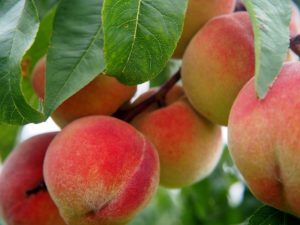
Year: 2017, 2018, and 2019
Market size: $599.9 million, $511.2 million, and $518.9 million, respectively
In the United States, April 13th is National Peach Cobbler Day. The day was invented in the 1950s by the Georgia Peach Council in order to sell more canned peaches. However, dessert cobblers have been around since the 19th century. These dishes were invented by settlers as they traveled westward in the early 1800s. Pies were popular among English and Dutch immigrants and fruit was readily available in the Eastern United States, but not having the ingredients and the ability to properly bake a pie as they traveled westward, settlers made do with what they had: fruit of some sort (preserved, canned, or dried) and biscuit dough. The ingredients were cobbled together in a Dutch oven and baked over an open fire until the dough was golden brown. The dish was eaten as breakfast or as a first or main course then. In the late 19th century, the cobbler was officially declared a dessert.
Today’s market size shows the value of utilized peach production in the United States in 2017, 2018, and 2019. In these years, production totaled 694,220; 638,020; and 658,830 tons, respectively. Since 2017, fewer peaches produced have gone to the fresh market. Processed peaches have increased their share of the market from 54.7% of the utilized crop in 2017 to 60.1% in 2019.
By far, California was the top state in terms of production, 495,000 tons, in 2019, with 53.1% being the clingstone variety. South Carolina was second with 63,700 tons, followed by Georgia (33,780 tons), Pennsylvania (19,080), New Jersey (17,980), Colorado (13,300), Washington (11,040), and Michigan (4,800).1 Top peach producers in the United States include Titan Farms and J.W. Yonce and Sons in South Carolina and Taylor Orchards, Dixie Bell Orchards, Lane Southern Orchards, and Pearson Farm in Georgia.2Worldwide, the production of peaches (and nectarines) totaled 25.7 million tons in 2019. China produced the most, 15.8 million tons, or 61% of world production.3 Spain ranked second in production with 1.5 million tons, followed by Italy (1.2 million), Greece (926,620), and Turkey (830,057). The United States ranked 6th, producing 739,900 tons of peaches and nectarines.
1 Starting in 2018, estimates were discontinued for 12 of the 20 states the National Agricultural Statistical Service tracked previously. These states include, in order of 2017 utilized production, West Virginia, Illinois, Idaho, New York, Ohio, Maryland, Virginia, Utah, Texas, Missouri, North Carolina, and Alabama.
2 Source: Christina Herrick, “American and Western Fruit Grower’s 2014 Top Stone Fruit Growers,” Growing Produce, September 13, 2014 available online here. Most recent data available. The source gives a ranking of the top 25 stone fruit growers in the United States. Data used in this market size post are for stone fruit growers whose only stone fruit crop is peaches.
3 Source: “FAOSTAT: Crops,” Food and Agriculture Organization of the United Nations available online here. Data were downloaded on February 23, 2021. The source reports data for both peaches and nectarines combined. Peaches and nectarines are almost identical genetically. Peaches have a dominant gene variant that causes them to have a fuzzy coating. Nectarines have a recessive gene that causes their smooth skin.
Sources: “Noncitrus Fruits and Nuts 2019 Summary,” United States Department of Agriculture, National Agricultural Statistical Service, May 2020 available online here; Alexia Wulff, “A Brief History of Peach Cobbler,” Culture Trip, November 23, 2016 available online here; “FAOSTAT: Crops,” Food and Agriculture Organization of the United Nations available online here; Christina Herrick, “American and Western Fruit Grower’s 2014 Top Stone Fruit Growers,” Growing Produce, September 13, 2014 available online here; Christine Gallary, “What’s the Difference Between Peaches and Nectarines?” Kitchn, July 20, 2015 available online here.
Image source: Flockine, “peach-fruit-fruits-peach-tree-bio-2632182,” Pixabay, August 11, 2017 available online here.
